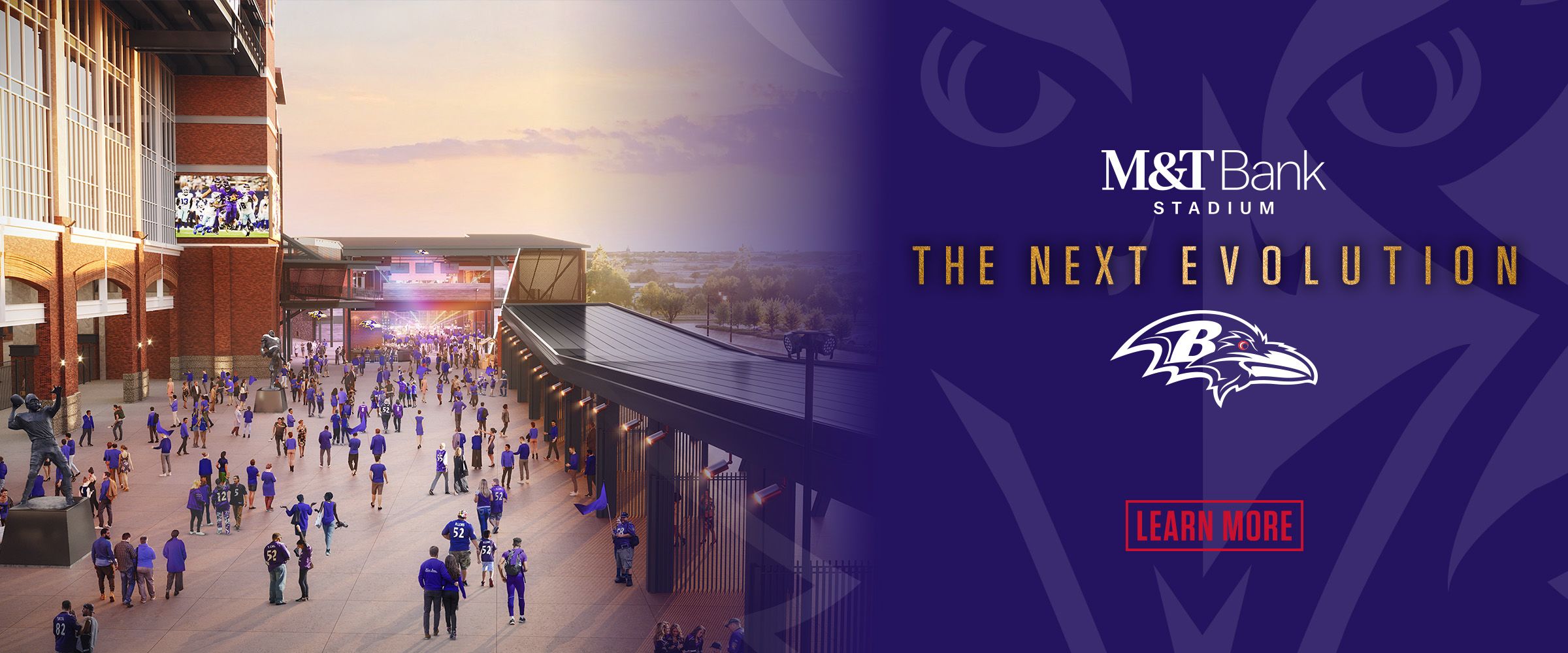Tagging and Trading Matthew Judon Wouldn't Be Easy
General Manager Eric DeCosta reiterated Tuesday at the NFL Scouting Combine that the Ravens "would love to" sign pending free agent Matthew Judon to a long-term deal, but using the franchise tag to retain the outside linebacker remains a possibility.
Another option to consider is to tag-and-trade Judon. (The franchise tag designation begins today and ends March 12). However, if the Ravens end up going that route, pulling it off is easier said than done, The Athletic's Jeff Zrebiec wrote.
"If the Ravens tagged Judon and realized they were nowhere close on an extension and didn't like the idea of him playing the year under the tag, several things would have to fall into place for them to execute a trade," Zrebiec wrote. "The timing would be crucial."
Zrebiec said such a scenario would be a three-step process. Here's how he broke it down:
Step One: Find a suitor and agree to the compensation.
"There's a league-wide demand for pass rushers so a guy like Judon, who made the Pro Bowl last year and is versatile enough to fit into different defenses, should garner some interest. … An interested team would almost have to be willing to part with a second-rounder even to make it worth the Ravens' while.
"If the Ravens let Judon walk in free agency, they'd be in line to get a third-round compensatory pick the following year. Yes, a tag-and-trade could net them a third-rounder in the upcoming draft, so they wouldn't have to wait a year for the return. But the immediacy of the pick might not be enough to entice the Ravens to take on the risks that come with franchising a player."
Step Two: Get Judon to sign the tag.
"He can take his time and see how things play out. And the Ravens can't trade him without Judon signing the tag. So in effect, he maintains a lot of leverage. If he doesn't like where the Ravens are trading him, he doesn't have to sign the tag."
Step Three: Judon agrees to contract extension with the acquiring team.
"It stands to reason that a team isn't going to trade a premium draft pick to acquire Judon without a deal in place to sign him long term. So Judon agreeing to sign the tag to facilitate a trade would likely hinge on the acquiring team's willingness to meet his asking price on a contract extension. That could take a while, too, further delaying matters at a time where the Ravens might need the salary cap space."
Ravens Could Reap Rewards of Deep Class of Receivers
While the Ravens have some obvious needs to fill on defense, wide receiver is the position to watch at the Combine, ESPN’s Jamison Hensley wrote.
"If there was a weakness in the Ravens' offense, it was the threat of someone lining up wide and beating defensive backs time and time again, whether it was going deep or running after the catch," Hensley wrote. "Now, the Ravens have the No. 28 overall pick in a draft that has one of the deepest wide receiver classes ever."
Because there is such a deep pool of talent at the position, the Ravens may be better served using their first-round pick on another position.
Hensley noted that the Ravens -- who selected Brown with the 25th-overall pick last year -- have never taken wide receivers in the first round in consecutive drafts, and only six teams have ever done so in the 84-year history of the draft.
With the top-tier receivers likely to be gone before the Ravens are on the clock, ESPN's Mel Kiper Jr. doesn't think there is enough value to warrant taking a receiver late in the first round.
"I think it's going to be very tough to find somebody at that point," Kiper said. "I think [an inside linebacker] would supersede a wide receiver who doesn't have a first-round grade."
NFL.com analyst and former Ravens wide receiver Steve Smith Sr. believes there are more than a half-dozen wide receivers in this year's class worthy of a first-round selection, but there's a good chance they won't all be picked on Day 1.
"Because of this year's highly touted QB group, I could see many talented receivers falling to Days 2 or 3," Smith wrote. "Several teams are going to get steals in April that should pay off huge come the fall."
Putting Premium on Tight Ends in Draft Paid Off Big for Ravens
One of the keys to the Ravens' high-scoring, innovative offense last season was the stellar play of tight ends Mark Andrews, Hayden Hurst and Nick Boyle. It didn't happen by accident.
"Last season may have been the year it all came together, but the groundwork began years back. Years prior, tight end was still an important position for Baltimore," NBC Sports Washington’s Ryan Homler wrote.
Three years after drafting Boyle in the fifth round in 2015, the Ravens selected Hurst with the 25th-overall pick before taking Andrews two rounds later. Picking tight ends in two of the first three rounds raised eyebrows, but the Ravens' front office had a clear vision for where the offense was headed.
"Having the plan to select Lamar Jackson in the 2018 NFL Draft, DeCosta, who was the assistant GM at the time, and others knew that the tight end position would become crucial in the offense that would be run with Jackson," Homler wrote. "Therefore, Baltimore put a premium on a few in the draft. Two that received the highest grades from them were Hurst and Andrews.
"The result? Potentially the most talented and deep tight end group in the NFL and an offense like none other."
Andrews was named to the Pro Bowl this past season after leading the Ravens in receiving with 64 catches for 852 yards and 10 touchdowns. Hurst and Boyle combined for 61 catches for 670 yards and four touchdowns and were outstanding blockers.
"We've always thought [tight end] was an important position, and then with our offense, [Offensive Coordinator] Greg Roman, he's always been a coach that liked a lot of multiple looks," DeCosta said during his press conference Tuesday. "And I think tight ends really do factor into that."
Should Ravens Draft Jalen Hurts?
In yesterday’s Late for Work, we wrote about how draft prospect Jalen Hurts is committed to playing quarterback in the NFL, just as Jackson was. Is there a possibility the two of them could be teammates in Baltimore?
Ebony Bird’s Richard Bradshaw believes the Ravens should consider drafting Hurts, who is projected as a Day 2 pick, to be the long-term backup for Jackson.
In his senior year at Oklahoma, Hurts finished second in the Heisman Trophy voting after throwing for 3,851 yards and 32 touchdowns in addition to rushing for 1,298 yards and 20 touchdowns. Those are similar numbers to what Jackson posted at Louisville in 2016 when he won the Heisman.
"From a talent and fiscal standpoint, Jalen Hurts is a seamless fit for the Baltimore Ravens," Bradshaw wrote. "You couldn't come up with a better fit in Greg Roman's offense besides Lamar Jackson. Hurts would be able to run the offense if needed and the team wouldn't miss a beat."
Bradshaw also noted that the Ravens could get even more creative with their offense by having Jackson and Hurts on the field at the same time.
ESPN analyst and former NFL executive Michael Tannenbaum floated a similar scenario a couple months ago.
"Let's say the Baltimore Ravens draft him and now you put him in the backfield with Lamar Jackson," Tannenbaum said. "Is that what football looks like in five years when you have two people that can run it and throw it? They would be impossible to defend."
Quick Hits



















